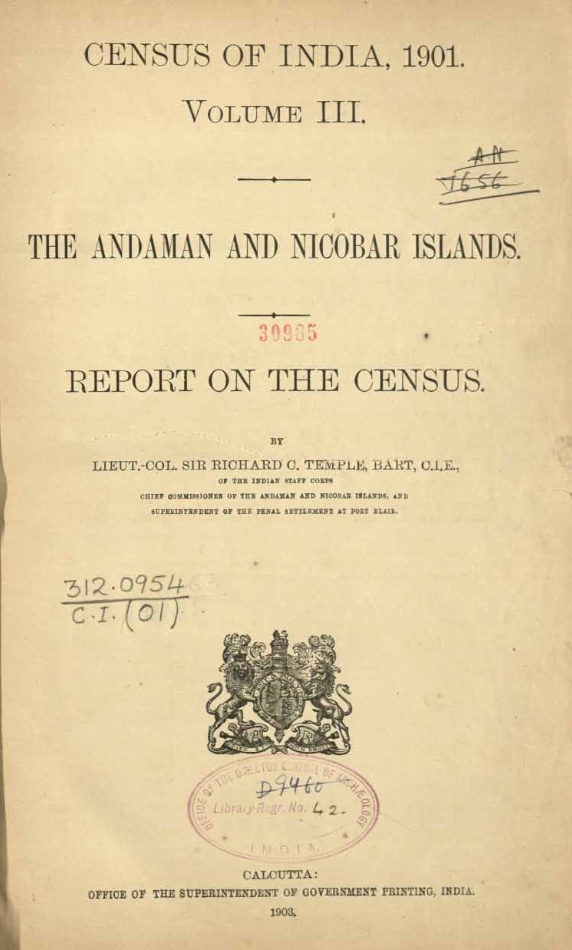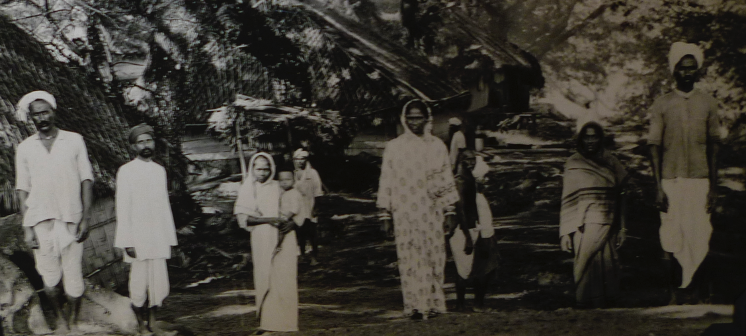Between 1858 and 1939, the British transported over 80,000 Indian and Burmese convicts to the penal colony of the Andaman Islands. In the face of Indigenous hostility to passing and shipwrecked vessels, Britain’s initial ambition was to use convicts to occupy the archipelago and secure sea routes, build necessary infrastructure, and develop agriculture and forestry. The immediate spur, however, was the prisons crisis that came in the aftermath of the Great Uprising of 1857, which left the British with nowhere to secure escaped prisoners or newly convicted rebels and mutineers.
The creation of the family was always central to Britain’s vision of settled cultivation in the Andamans. The British encouraged the small number of convict women sentenced to transportation to get married and hoped that ultimately male convicts and ex-convicts would be joined by their free families. In the 19th century, however, successive family emigration schemes largely failed, though after receiving their ticket-of-leave (a form of probation), small numbers of convict men and women did marry, becoming what were known as ‘self-supporters’. During this period women rarely constituted even as much as 10 per cent of the convict population (see table below), and many returned to India with their ex-convict husbands when they received their release or pardon. Nonetheless, self-supporter families had children, and these girls and boys grew up to form the basis of what was called the ‘local-born’ community. Those that did not return to the mainland but stayed in the Islands later married each other, self-supporters, or other settlers, to create genealogies of descent that are still apparent in the Andamans today.
Percentage of convicts who were women in the Andaman Islands, 1858-1940

Source: Clare Anderson, ‘Transnational Histories of Penal Transportation: punishment, labour and governance in the British Imperial World, 1787-1939’, Australian Historical Studies, 47, 3 (2016), 381-97 (open access)
Convicts came from all over the Indian subcontinent, which prior to 1937 also included Burma. Thus, the penal colony was a patchwork of diverse cultures, languages, and religious practices. Details of the social complexities of the Islands emerge in many archival sources, including in the censuses that from 1871 were conducted, as on the Indian mainland, every ten years. A particularly valuable source for historians is the census of 1901, which was overseen by the Islands’ Chief Commissioner, R.C. Temple. Temple had previously served in the Punjab, and was a keen anthropologist, philologist, collector, and writer; he was also editor of the well-known journal The Indian Antiquary.
The Census of India, 1901

The 1901 census employed 60 government officials and 70 convict clerks, with the gathering of data from the penal colony overseen by Deputy Superintendent F.E. Tuson. His team’s research into the 16,256-strong population in the Islands (11,947 of whom were convicts) went well beyond what was required for the pro forma tables supplied by the Indian mainland. The team used penal colony records such as muster sheets (unfortunately since destroyed during the Japanese occupation of World War II) and asked questions of convicts, convict self-supporters, their families, and others. Temple used this material in the 1901 report, for instance to construct patterns of convict morbidity and mortality, to compare crime rates with those on the mainland, and (my interest in this blog), to build a detailed picture of the lives of convicts, ex-convicts, and their children.
The Andaman census was excluded from the summary tables presented for all-India. This was perhaps because the population of the Islands greatly perplexed administrators because it was so diverse, and the categories that were created to explain (and thus in important ways to ‘fix’) society and culture in other parts of British India did not fit the Andamans. From the time of British occupation into the 1860s, the Andamans were likely the most cosmopolitan place in British Asia (if not the whole of the British Empire). Indeed, according to Temple, in 1901, convicts spoke 41 languages. Over time, new kinds of syncretic cultures (and an ‘Andaman Hindi’ vernacular) emerged. One interesting transformation was regarding caste. Temple noted his difficulties in classifying Hindu convicts into castes and explained that cultural and social mixing in the Islands transformed caste groups in the Islands in ways that were fundamentally different from those of the mainland.
In terms of the local-born community, the 1901 census recorded 2,030 local-born children living in the Islands. The previous 1891 census had noted that another 410 children had returned to the mainland with their freed parents. Temple wrote that there was a convict ‘taint’, and free people saw marriage to local-born people as ‘degrading’. However, in the face of a grossly imbalanced gender ratio, they had worked out marriage customs amongst themselves. The prohibition on marriages of girls aged under 16 in the Islands had affected overall customs so profoundly that marriage ages were much higher than those of India. Muslims tended to marry each other. For Hindus, he reported, the ideal was for local-born men to marry the daughters of men who shared their father’s caste. This was not always possible, in which case the men passed their caste on to their children. The man’s family often paid for the wedding, unless they did not have the means, in which case the woman’s family covered the expenses. There were no dowries. Women could marry up or down castes. Overall, caste among convict children and their descendants was greatly simplified and quite dynamic.
Interestingly, Temple did not engage in any kind of discussion about whether criminality was biologically determined, which was a question that had been under debate across Britain and Empire since at least the 1860s. Rather, he described convicts’ children as ‘bright, intelligent, and unusually healthy’. ‘On the whole,’ he added, ‘considering their parentage, the local born population is of a much higher type than the inexperienced would expect to find them.’
The next census, of 1911, overseen by R. F. Lowis, reported on marriage and children, too. Noting that the gender imbalance meant that female children were highly prized, Lowis wrote that the breakdown of caste had greatly extended women’s freedom, to the point that ‘the remarriage of widows is tolerated.’ With a few exceptions, convicts were not put to caste-based work. They worked together and formed friendships, and as reported by Temple a decade earlier continued to marry within broad caste groups. There were no endogamous or exogamous groups or prohibited relationships. Whatever their previous occupation in India, most self-supporters became cultivators. This constituted what Lowis called ‘a deadening and levelling process’, where caste had very little influence on the younger generations of the local-born.
Married convicts with their families, Andaman Islands penal colony, c. 1931

Source: SOAS Library, Special Collections Ms 380828: Charles J. Bonington, Islands of No Return
After Indian independence in 1947, censuses continued, though the local-born were not enumerated separately. In 1951, deputy commissioner and superintendent of the census, S.K. Gupta wrote of the them with the highest praise: ‘[The]process of integration of a variety of territorial and religious groups has produced a most interesting community of people with a remarkable quickness of intellect and practical sense.’ In the Andamans, he saw ‘the birth of the organic essence of Indian humanity’.
Following successive immigration schemes in the decades that followed independence, it is this diversity which has given rise to the idea of the Islands as ‘mini India’; a representation of an ideal nation in which people from widely different region and communities live together in harmony. The contribution of the Islands’ penal colony history to this cannot be overstated.
Further reading